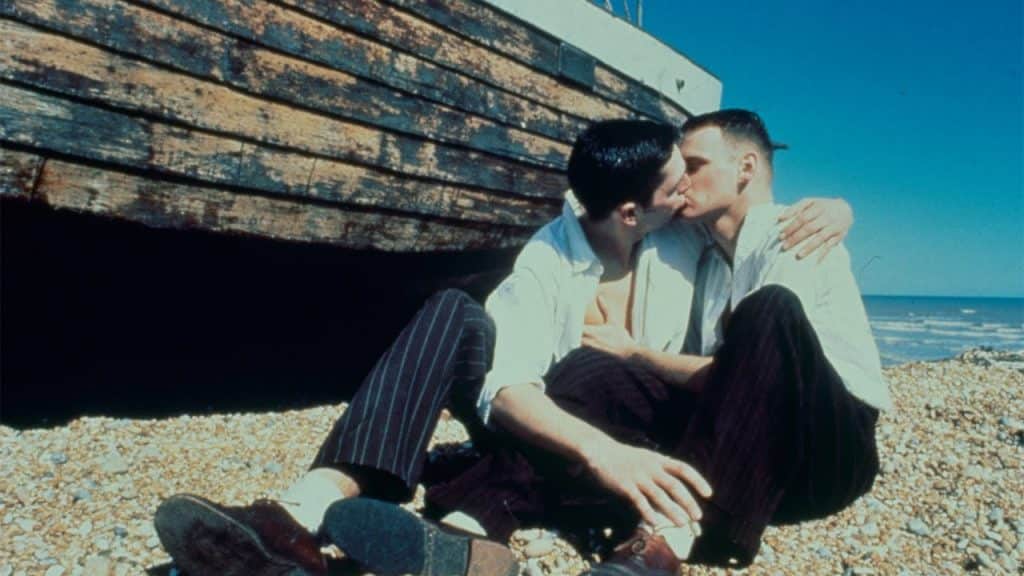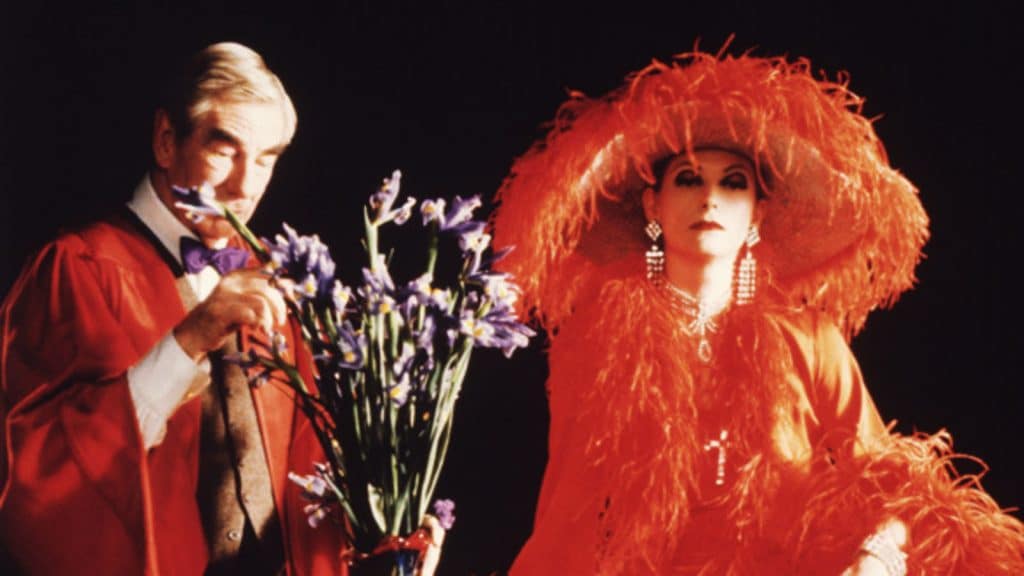Read also:
How to Watch FX Live Without CableHow To Watch AMC Without CableHow to Watch ABC Without CableHow to Watch Paramount Network Without CableKinoKultur is a thematic exploration of the queer, camp, weird, and radical releases Kino Lorber has to offer on physical media and video on demand.
Watched in conversation with one another, Derek Jarman’s final films, especially The Garden, Wittgenstein, and Blue offer a fascinating and deeply personal exploration of queerness, cinema, and legacy. Though he would die of AIDS at the age of 52, a mere 5 months after Blue premiered, these three film present this vibrantly queer artist at his most experimental. Currently all available to rent via KinoNow, they are a testament to Jarman’s boundless imagination and the perseverance of the creative spirit.
The Garden (1990), like the vision of life Jarman presents within it, is a journey with no telos, “no sweet conclusion.” It’s an anarchic montage of images, sounds, and dialogue that presents Jarman’s final indictment of organized religion. Loosely following a gay couple as the navigate a netherworld of prejudice, Jarman recurringly uses religious imagery, particularly that of The Madonna (played by his muse Tilda Swinton), to highlight the ways queer people have been emotionally, symbollically, and culturally oppressed and the havoc this has wrought upon the earth.
But in these chaotic, mournful, and sometimes violent images, Jarman always manages to circle back, invert the problem, and find the joy and things worth celebrating. Even at the end of his own life, Jarman was still fascinated and Life as an enchanted time. The Garden, for all it’s anger, still concludes with queer joy and queer peace. To see Jarman at the end of his film, watering his garden with a smile, while a nuclear plant bellows in the near distance, is a perfect metaphor for queer life at the end of the 1980s and still is today.

If The Garden crystalized Jarman as a philosophical artist, then Wittgenstein (1993) is his thesis statement. Depicting the life of early 20th century child prodigy philosopher Ludwig Wittgenstein in a more semi-conventional way than The Garden, this film is a colorful, theatrical, and nonetheless surreal exploration of his life and his ideas. Jarman uses a black box set to make time and place irrelevant while foregrounding the true stars of the film — the human mind and Sandy Powell’s brilliantly eccentric costume design.
Jarman is particularly fascinated by Wittgenstein’s ideas on the limits of language and philosophy. The pair are well met for both are fascinated by both “logical symbolism and religious mysticism,” ordered signifiers in the context of holy chaos, and how they help (or don’t help) us understand the language of reality. “To imagine another language is to imagine another life,” Wittgenstein says at one point in the script co-written with literary scholar Terry Eagleton. Set in the context of Jarman’s other works, it’s clear to see that Jarman thinks the same applies to cinematic language as well. In a way, the film is a kind of self-criticism, a self-summation at the end of a creative career.
As we see in The Garden, he can play with the visual-audio language of cinema to imagine a world that is all past, present, and future. With Wittgenstein he can imagine and present the interior life of a thinker slowly dying of disease, just like himself, and illustrate some of those ideas for an audience to preserve them forever. Jarman’s next and final film will shatter cinematic language all together.

By 1993, side effects from his treatments and acceleration of the AIDS virus had made him lose most of his sight, leaving him only able to see shades of blue. Thus, Blue (1993) presents self-narration and commentary by friends against an unchanging blue screen. Jarman’s brilliant use of lyrical prose and music by frequent collaborators Simon Fisher Turner and Brian Eno, nevertheless creates a sense of film movement. Nothing about Blue feels static.
As we hear Jarman et al. talk about his physical and creative vision, it’s difficult not to get emotional. In spite of all he’s losing — his sight, his ability to make visual films, his future, Jarman still remains hopeful, resilient, and committed to his vision. He continually calls us back to a center where we can return to the breath, to the words, and to the transigent spirit of life to find serenity, stability, and self-acceptance.
These three films present a devastating but still joyful final conclusion to the life of one of New Queer Cinema’s foundational radicals. Watching these films, it’s easy to see how much Derek Jarman’s style has influenced films today, especially queer and art house cinema. And they fully encompass Jarman’s singular gift as a director which is his ability to make us think about the queer and limitless power of cinema and the human imagination simultaneously.